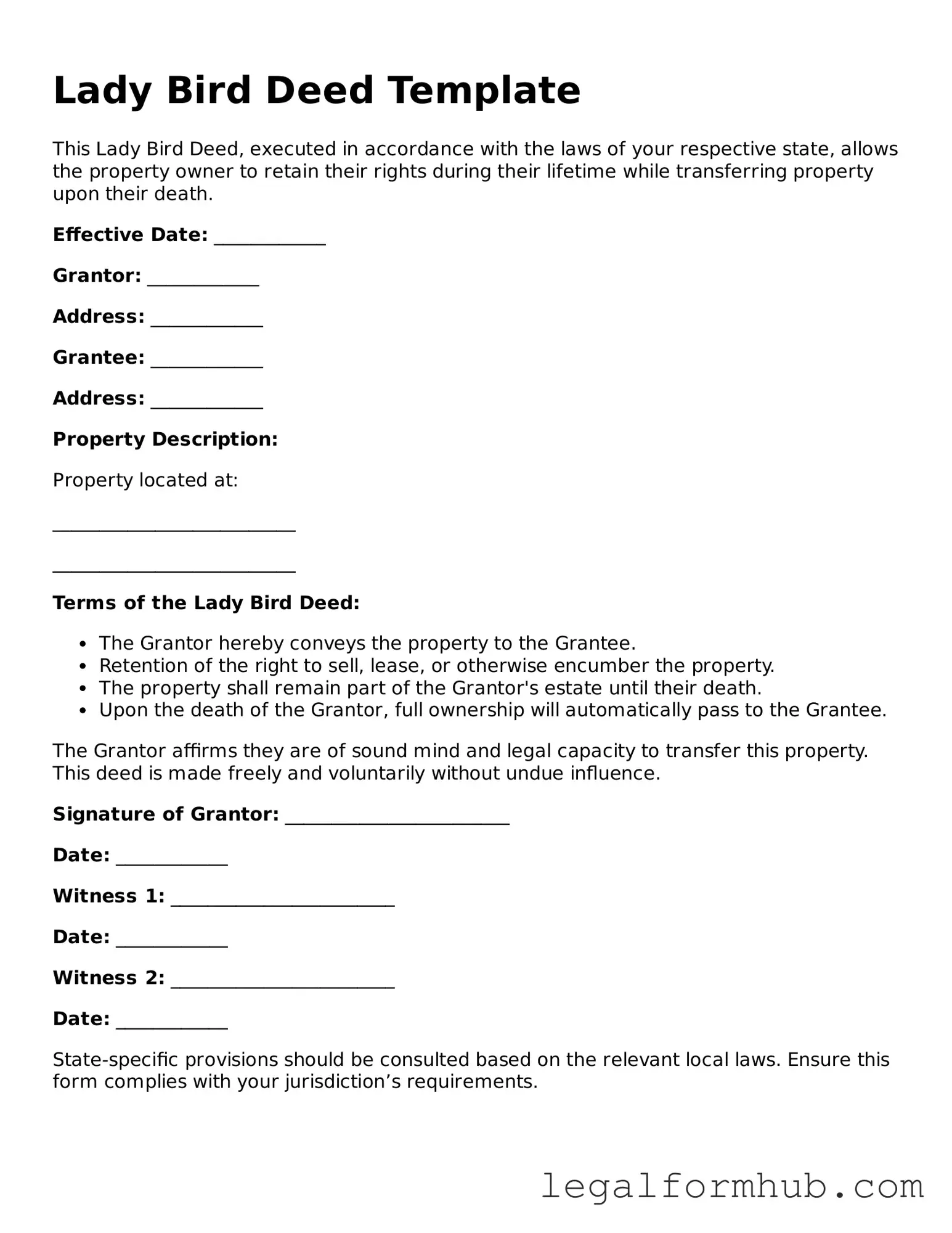The Lady Bird Deed, often known as an enhanced life estate deed, is similar to a traditional life estate deed. Both documents allow the property owner to retain the right to live in and use the property during their lifetime. However, the key difference lies in the ability to sell or mortgage the property without the consent of the remaindermen. In a traditional life estate deed, the remaindermen have a vested interest in the property, which can complicate the owner's ability to manage the asset. The Lady Bird Deed offers greater flexibility and control to the property owner, making it a preferred choice for many.
A quitclaim deed also shares similarities with the Lady Bird Deed, particularly in its function of transferring property rights. A quitclaim deed allows an individual to transfer whatever interest they have in a property without making any guarantees about the title. While it does not provide the same life estate benefits as the Lady Bird Deed, it is often used to clear up title issues or transfer property between family members. The simplicity of a quitclaim deed can make it a quick solution for property transfers, but it lacks the protective features that a Lady Bird Deed offers.
If you are considering buying or selling an all-terrain vehicle, it is crucial to understand the significance of the necessary documents involved in the process. For comprehensive guidance on completing the ATV Bill of Sale, visit our detailed ATV Bill of Sale form overview.
Another document that aligns with the Lady Bird Deed is the transfer-on-death (TOD) deed. A TOD deed allows property owners to designate a beneficiary who will automatically receive the property upon the owner's death, bypassing probate. While both the Lady Bird Deed and the TOD deed aim to simplify the transfer of property and avoid probate, the Lady Bird Deed allows the owner to maintain control and use of the property during their lifetime. This control can be crucial for individuals who wish to manage their assets actively until death.
The revocable living trust also shares some characteristics with the Lady Bird Deed. Both are estate planning tools designed to facilitate the transfer of property while avoiding probate. A revocable living trust allows the property owner to place their assets into a trust, which can be managed during their lifetime and distributed according to their wishes after death. However, unlike the Lady Bird Deed, a living trust requires the property to be retitled in the name of the trust, which can involve more administrative steps and costs.
Lastly, the special warranty deed is similar to the Lady Bird Deed in that it provides some level of protection to the grantee regarding the title. A special warranty deed guarantees that the grantor has not encumbered the property during their ownership but does not cover issues that may have arisen before that time. While it does not offer the same lifetime control as the Lady Bird Deed, it does provide a degree of assurance to the new owner that the property is free from claims made during the grantor's ownership period.
